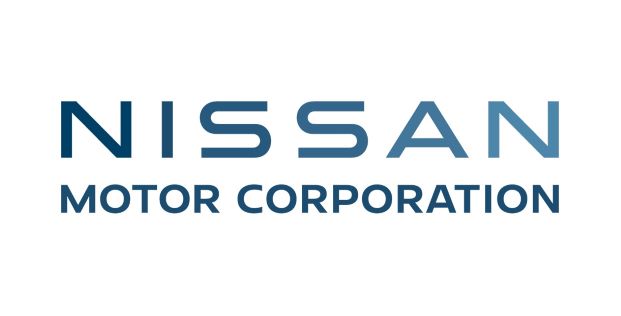Sign up for daily news updates from CleanTechnica on email. Or follow us on Google News!
Wired calls her “the most memeable politician ever.” US presidential candidate and current Vice President Kamala Harris, age 59, certainly has captured the joie de vivre of the social media-immersed under 30’s who have pushed for climate action, igniting a collective sigh of relief. Harris has established her climate positions by endorsing hundreds of billions of dollars in tax credits and rebates for renewable energy and electric vehicles (EVs). By all indicators, a Harris presidency would continue to implement policies in support of the adoption of EVs.
After all, transportation is the largest US sector for emissions.
Harris seems intent on continuing a vision for a net zero US emissions future through substantial investments in domestic EV car manufacturing, funding for EV charging stations, and enhanced consumer incentives to buy EVs.
Jessica Caldwell, head of insights at Edmunds, outlined the importance of government support for EVs moving forward:
“In order for its buyer base to evolve from early adopters to mainstream consumers, EVs will likely rely on continued government support to hit volume sales targets across all brands. Even with the enthusiastic backing of a fresh presidential administration, enacting such a dramatic shift in the vehicle market is a massive undertaking and the politically charged rhetoric surrounding EVs will likely place extra pressure on any new policy decisions.”
What indications are there that a Harris–Walz administration would press for policies that advance US adoption of EVs?
Fuel economy standards: The US Department of Transportation’s National Highway Traffic Safety Administration in June issued new vehicle fuel economy standards that are designed to save US residents more than $23 billion in fuel costs while reducing pollution. This rule is in accordance with continuous energy security efforts that date back to the 1970s, when the average vehicle got about 13 miles to the gallon. Fuel economy will increase 2% per year for model years 2027–2031 for passenger cars, while light trucks will increase 2% per year for model years 2029–2031. These increases will bring the average light-duty vehicle fuel economy up to approximately 50.4 miles per gallon by model year 2031.
In May, Harris traveled to Detroit, Michigan, where she announced $100 million for small- and medium-sized auto manufacturers to upgrade their facilities for EV production. “This investment will help to keep our auto supply chains here in America,” Harris explained, “which strengthens America’s economy overall and will keep those jobs here in Detroit.”
Republican vice presidential nominee JD Vance recently attacked Harris, attempting to tie Harris’s support of EVs to alleged thousands of workers losing jobs at a pickup plant near Detroit. “Just a few days ago, Stellantis announced that it was going to permanently cut nearly 2,500 proud Michigan auto workers who make the iconic Ram 1500,” Vance revealed at a rally near Grand Rapids, Michigan, adding, “Kamala has done nothing.” Whoops! This model has been manufactured for 16 years running and has well exceeded its expiration date. Rather than closing that factory, as Vance stated, Stellantis will be keeping its Warren factory open and will continue building Jeep Wagoneer and Grand Wagoneer sport utility vehicles there.
Meanwhile, the UAW has filed federal labor charges against what it calls “disgraced billionaires Donald Trump and Elon Musk” due to their illegal attempts to threaten and intimidate workers, whether explicitly or implicitly. Workers who self-advocate for better working conditions by engaging in protected concerted activity, such as strikes, cannot be fired under federal law — even threatening to do so is illegal under the National Labor Relations Act. Vance seems to be filtering only the automaker comments that suit his boss, eh?
New funding for EV manufacturing: The US Department of Energy will split $50 million between six states with sizable workforces in the automotive industry to help small- and medium-sized suppliers adapt manufacturing facilities for the EV supply chain, the department said on August 15. The Biden–Harris program aims to expand manufacturing from light- to heavy-duty EVs and components and to support commercial facilities, including for vehicle assembly, component assembly, and related vehicle part manufacturing.
In the same release, the DOE also announced it was awarding $1.5 million to three teams of technical assistance providers under its Industrial Training and Assessment Center program. The teams will help create a playbook to assist internal combustion engine suppliers with the transition to EV or adjacent markets, the DOE said.
Inflation Reduction Act continues to shine: The Biden–Harris administration’s 2022 Inflation Reduction Act (IRA) — which Harris cast the tie-breaking vote to pass in Congress — marks the largest climate investment in US history. The legislation is designed to reduce US carbon emissions by 40% by 2030, with $370 billion in wind, solar, battery, and EV production investments over the next 10 years.
One IRA oppositional ad campaign, paid for by the American Fuel and Petrochemical Manufacturers lobbying group, claims that the Biden administration is “rushing to ban new gas-powered cars” and “force you into an electric vehicle.” Those lies, which PACs will certainly embrace to fight the Harris–Walz campaign, will serve to prop up Trump’s faltering push for the White House. The ads have aired in Michigan, Pennsylvania, Nevada, Arizona, Ohio, Montana, Wisconsin, and other key battleground states.
The LA Times editorial board argues that Trump “during his presidency tried to demolish all manner of environmental protections to benefit polluting industries. He’s proving to be a receptive vessel for their message once again.” The Times adds that the Trumpies fail to offer constructive solutions to help the US auto industry be globally competitive, such as the historic levels of investment in domestic vehicle and battery manufacturing under Biden’s Inflation Reduction Act,
“Republicans are promising only to turn back the clock and let car companies churn out as many gas guzzlers as they want. Americans should see this lie for what it is: An effort by some of the most powerful companies in the world to sow confusion and prey on our anxieties in the pursuit of power and profit.”
Trump vacillates over EVs: Even the right-leaning Wall Street Journal (WSJ) admits that “a lot of us are all wrong in how we think about electric vehicles and charging.” They acknowledge that the current narrative in which the adoption of EVs “will remain inconvenient and incremental until America has an adequate away-from-home charging infrastructure” has huge gaps. Yes, the WSJ states, having lots of fast chargers capable of filling up our vehicles in not much more time than we would normally spend at a gas station is great. Yet to their credit they dismiss the claim that “without such a network, range anxiety and America’s culture of road trips, super commuting, and endless errands will make EVs a nonstarter for many people.” That’s because most EV drivers charge at home; even a Level 1 wall plug will do the trick, given overnights and downtimes when the EV isn’t being driven.
Trump has been inconsistent in his EV messaging, failing to get down to such nuts-and-bolts of actual EV driving and, instead, kissing up to campaign funders like Elon Musk and adjusting his anti-EV stance accordingly. Before his conversation with Musk this week, for example, the former president had maintained that electric vehicle production and sustainable energy sources are bad for the economy. “I will end the electric-vehicle mandate on day one, thereby saving the U.S. auto industry from complete obliteration,” Trump told the audience at the Republican National Convention in July.
We’re looking forward to this week’s Democratic campaign and the Harris–Walz messaging around climate action, particularly that of EVs.
Featured photo: “Kamala Harris” by Gage Skidmore (CC BY-SA 2.0 license)
Have a tip for CleanTechnica? Want to advertise? Want to suggest a guest for our CleanTech Talk podcast? Contact us here.
Latest CleanTechnica.TV Videos
CleanTechnica uses affiliate links. See our policy here.
CleanTechnica’s Comment Policy




